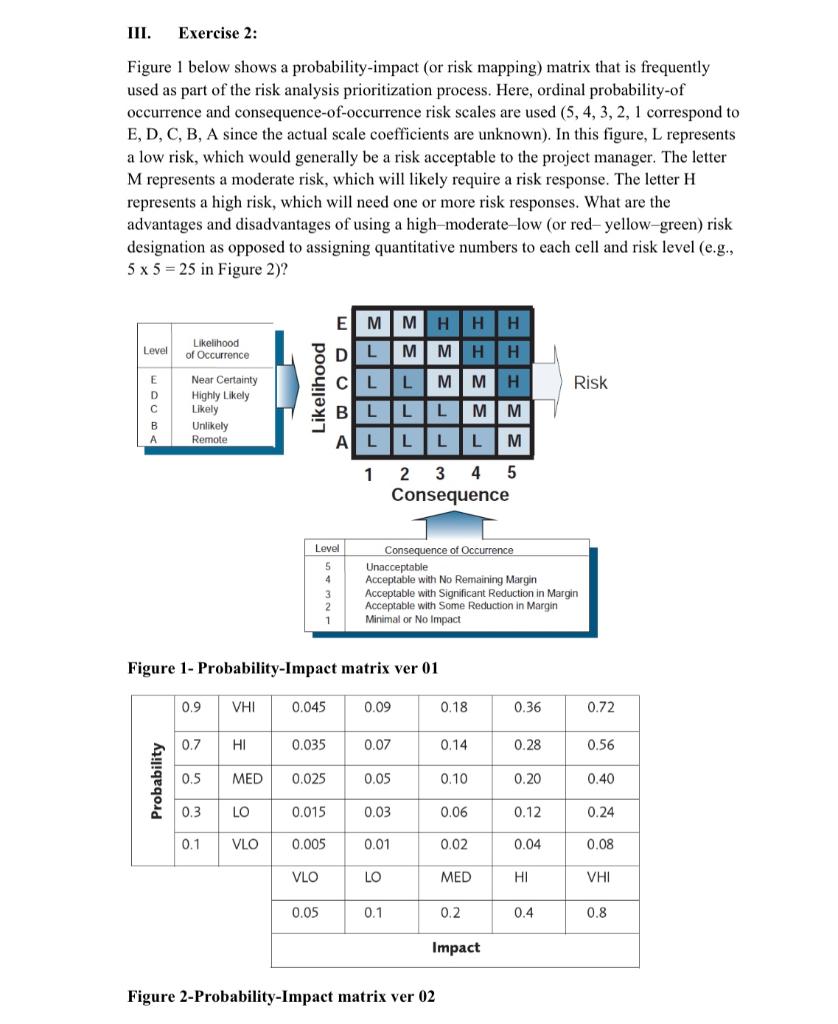Home /
Expert Answers /
Operations Management /
iii-exercise-2-figure-1-below-shows-a-probability-impact-or-risk-mapping-matrix-that-is-freque-pa304
(Solved): III. Exercise 2: Figure 1 below shows a probability-impact (or risk mapping) matrix that is freque ...
III. Exercise 2: Figure 1 below shows a probability-impact (or risk mapping) matrix that is frequently used as part of the risk analysis prioritization process. Here, ordinal probability-of occurrence and consequence-of-occurrence risk scales are used \( (5,4,3,2,1 \) correspond to E, D, C, B, A since the actual scale coefficients are unknown). In this figure, L represents a low risk, which would generally be a risk acceptable to the project manager. The letter \( \mathrm{M} \) represents a moderate risk, which will likely require a risk response. The letter \( \mathrm{H} \) represents a high risk, which will need one or more risk responses. What are the advantages and disadvantages of using a high-moderate-low (or red- yellow-green) risk designation as opposed to assigning quantitative numbers to each cell and risk level (e.g., \( 5 \times 5=25 \) in Figure 2)? Figure 1- Probability-Impact matrix ver 01 Figure 2-Probability-Impact matrix ver 02
Expert Answer
Advantages and Disadvantages of using high-moderate-low risk designation as opposed to assigning quantitative numbers to each cell and risk level. Advantages: 1. As shown in figure 1, the high-moderate-low designation helps to recognize and determine
